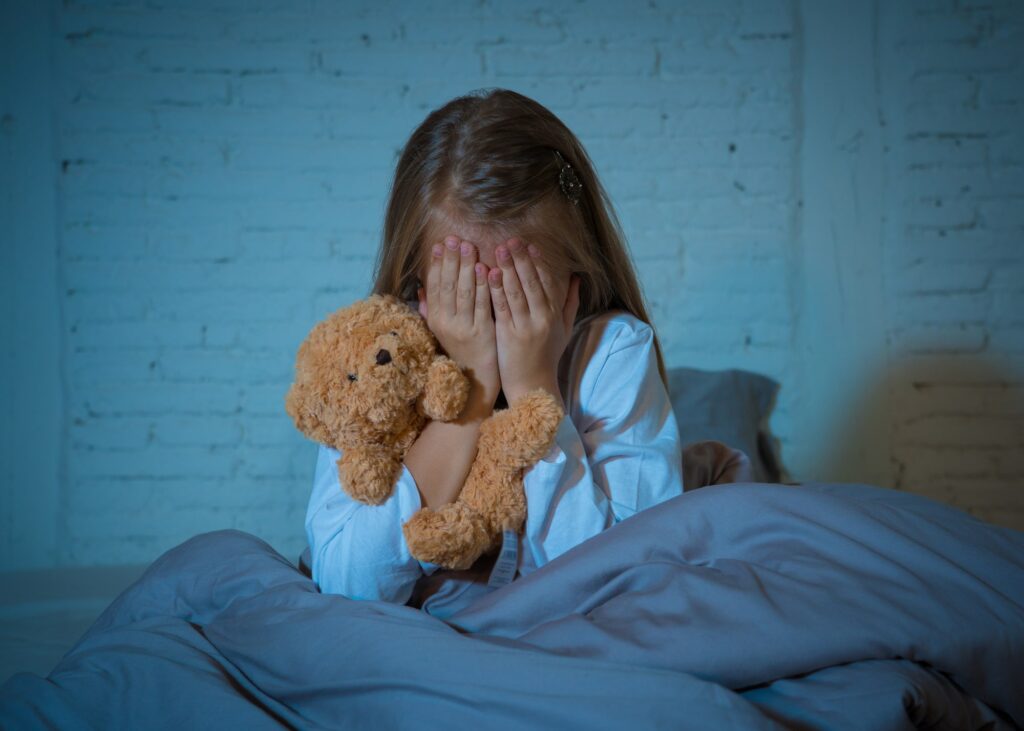Nightmares and night terrors – what’s the difference?
Children all have bad dreams from time to time, but how do you know if it’s a nightmare or a night terror?

What are nightmares?
Nightmares are vivid, frightening dreams that often wake you from sleep. They are most common in children, with up to half of all children experiencing them. Adults can also experience them, however, only around 2.5% to 10% of adults have them. Nightmares occur during the REM (rapid eye movement) phase of sleep which is also known as dreaming sleep.
What are night terrors?
Night terrors affect almost 40% of children and a much smaller percentage of adults. They are usually characterised by episodes of screaming, shouting, thrashing about, or kicking while still asleep. During a night terror, a child may sit upright in bed with their eyes wide open. However, they won’t be aware of the environment around them. Also known as sleep terrors, these episodes can last between 10 – 30 minutes.
How do you know the difference?
Nightmares and night terrors have key differences, as outlined in the table below:

What causes nightmares and night terrors?
Nightmares are often caused by a child hearing or seeing something frightening that causes them to feel anxious. These may be real or imagined events. Nightmares can also be triggered by stress, trauma, or physical or mental illness.
Night terrors are classified as parasomnia (undesirable behaviour during sleep). They can be triggered by sleep deprivation and extreme tiredness, stress, disrupted sleep schedules or high fever. They are also linked to other health issues that interfere with sleep. These may include abnormal breathing during sleep, restless leg syndrome, mood disorders and medication.
How do you treat nightmares and night terrors?
The good news is that children usually outgrow nightmares and night terrors as they get older and treatment is usually unnecessary.
In the case of nightmares, be there for your child and assure them that they are safe and they have nothing to be frightened of. Ask what they were frightened of, and monitor what they watch on TV, or read in books.
If your child experiences a night terror calmly wait until it is over, ensuring that they can’t harm themselves if they are thrashing or moving about.
Establishing a regular, relaxing bedtime for your child can greatly reduce the likelihood of having nightmares or night terrors.
However, if they persist, or they interfere with your child’s daily living see your doctor.
Supporting families
At BedGuard have a range of comfortable, waterproof mattresses for all members of the family, to help you have a good night sleep. Come in-store or browse online today.





